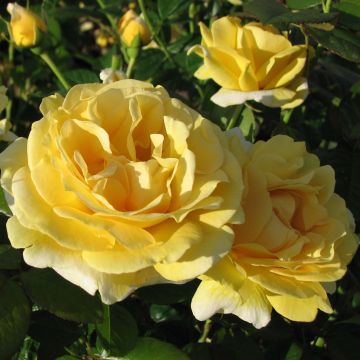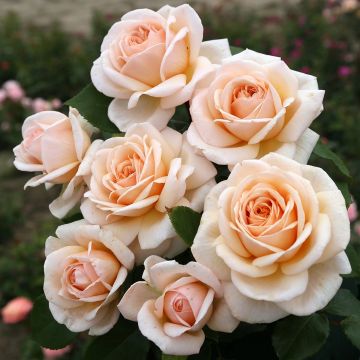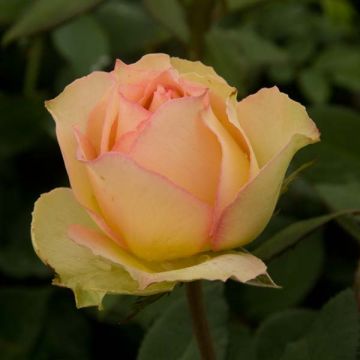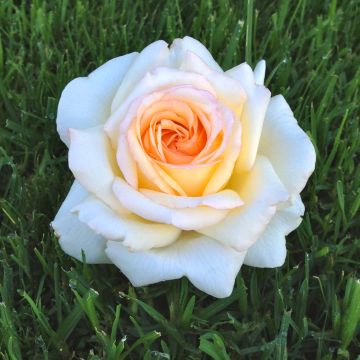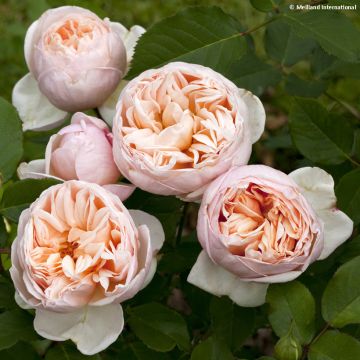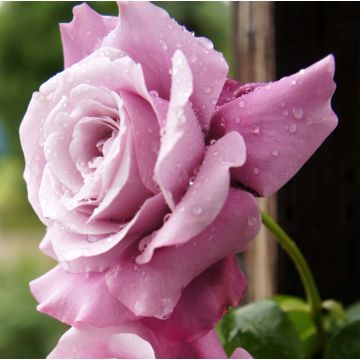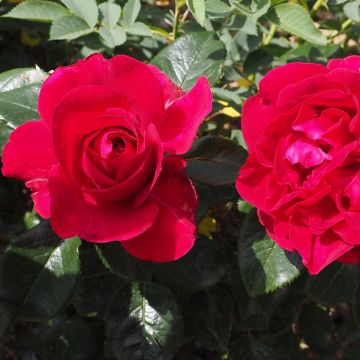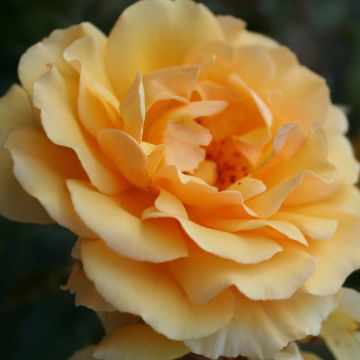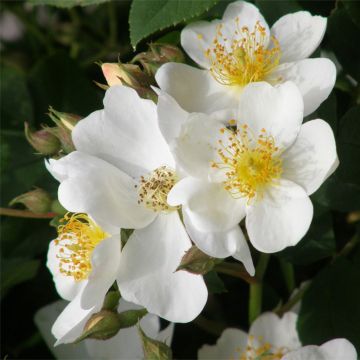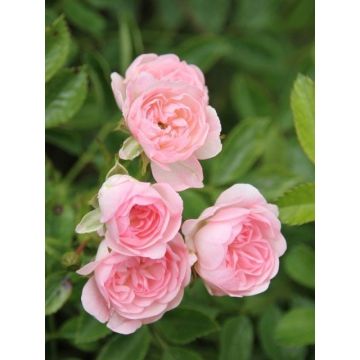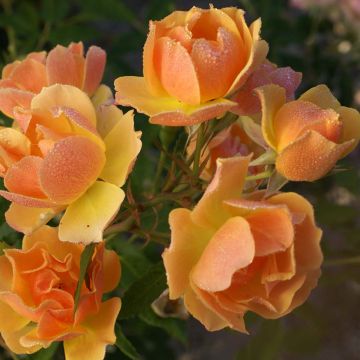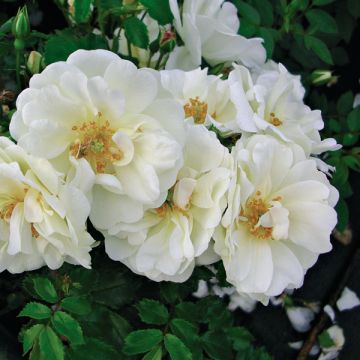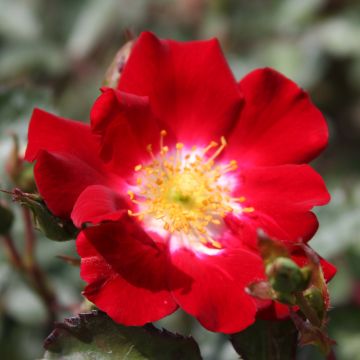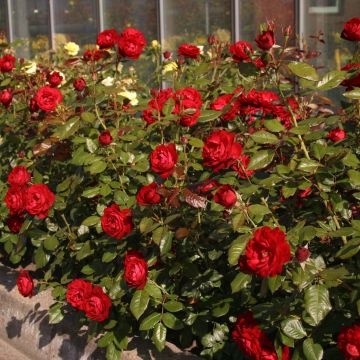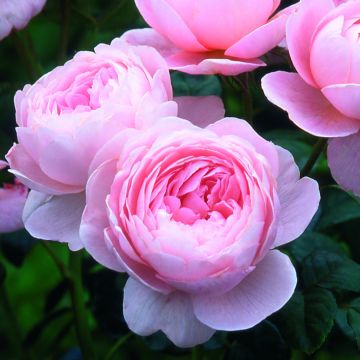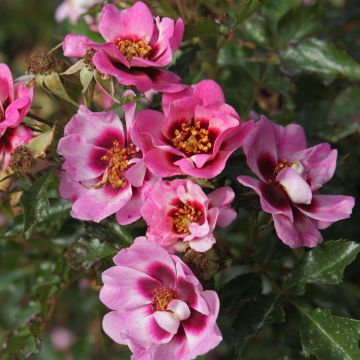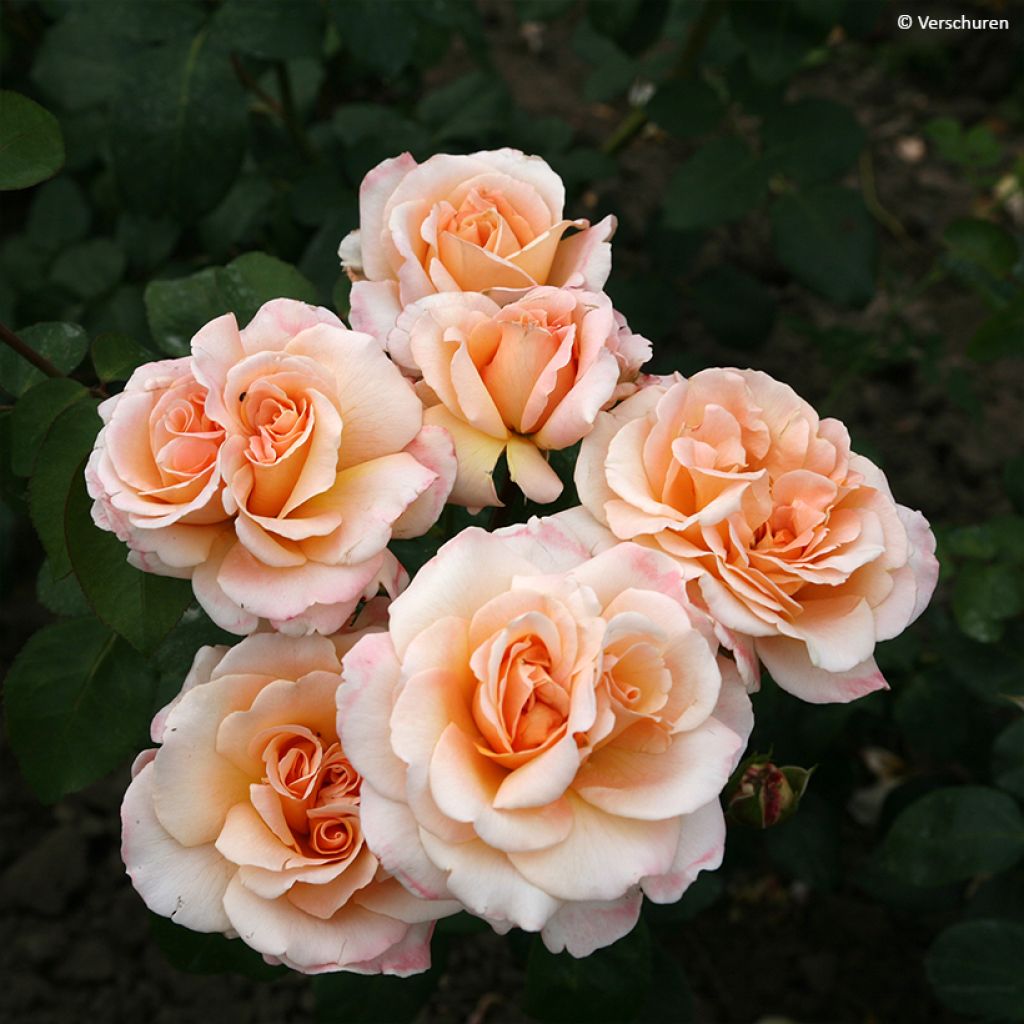

Rosa Eleganza Antique Oh Happy Day
Rosa Eleganza Antique Oh Happy Day
Rosa Eleganza® Antique® Oh Happy Day® 'Koroligeo'
Hybrid Tea Rose
This item cannot be shipped to the selected country
Delivery charge from €5.90
Delivery charge from €5.90
Delivery to Corse prohibited
More information
Schedule delivery date,
and select date in basket
This plant carries a 24 months recovery warranty
More information
We guarantee the quality of our plants for a full growing cycle, and will replace at our expense any plant that fails to recover under normal climatic and planting conditions.
From €5.90 for pickup delivery and €6.90 for home delivery
Express home delivery from €8.90.
From €5.90 for pickup delivery and €6.90 for home delivery
Express home delivery from €8.90.
Delivery to Corse prohibited: UE law prohibits the import of this plant from mainland France to Corse as part of the fight against Xylella fastidiosa. Please accept our sincere apologies.
More information

Does this plant fit my garden?
Set up your Plantfit profile →
Description
The Eleganza® Antique® Oh Happy Day® 'Koroligeo' Large Flowered Rose Bush is a beautiful hybrid tea variety that produces bouquets of flowers from May to October. Very double, with a turbinated centre, sometimes double or even triple, the roses combine the aesthetics of an old rose with a modern apricot colour. The dark green foliage of this bush rose is exceptionally resistant to diseases, providing a contrasting backdrop to highlight the vibrant flowering. Stunning in borders or groups, it can also be grown in containers and will produce beautiful bouquets with a light fragrance.
The Oh Happy Day® 'Koroligeo' rose, introduced to the market in 2015, is part of the Eleganza range by Kordes Rosen. Located in the far north of Germany, it is one of the largest rose producers in Europe. This rose has received the demanding German ADR label. Varieties are evaluated in real conditions, without any sanitary treatment for three years, and under various growing conditions. They are judged on their beauty, flowering, fragrance, colour, vegetation, habit, hardiness, growth, and resistance to fungal diseases.
Medium-sized, this rose forms a 1.20m (4ft) tall and 70cm (28in) wide bush. It has foliage composed of an odd number of leaflets, with a dark green colour and a glossy surface, remaining healthy throughout the season. 'Oh Happy Day' is exceptionally resistant to powdery mildew, a fungus that forms a white felt on the leaves, and very resistant to rust and black spot disease, both of which create unsightly blotches on the leaves and weaken the plant. From May to October, large roses with a diameter of 8 to 10cm (3 to 4in) bloom in clusters at the ends of the stems. These double flowers, which usually have 50 to 55 petals, are often polymorphous. Some have the classic shape of hybrid teas, with petals that become increasingly imbricated towards the centre. Others reveal the stamens as they mature, while some have two or even three turbinated centres, creating an original and simply delightful pattern. Although the flowers have an average lifespan, they regularly renew themselves, especially if faded ones are removed. The original colour of this rose greatly contributes to its charm. The centre of the roses has an apricot hue that lightens as it reaches the outer petals, which take on a cream colour or sometimes a pale pink hue. The apricot centre can also blend with yellow, creating a delightful colour scheme. Slightly fragrant, the roses are ideal for making bouquets, as they are often already grouped in corymbs on the stem.
Combining the romantic charm of old varieties with disease resistance, the 'Oh Happy Day' rose is an excellent choice for the garden. It can be planted in various borders, paired with blue-flowering plants. The striking Iris germanica 'Gnu Blues', with its randomly striped blue flowers, will create an original scene in spring. For summer, Caryopteris clandonensis 'Thetis' will also be an excellent choice. Of course, white flowers will complement these colour combinations, such as those of Gaura lindheimeri 'Elegance', which are gathered in graceful spikes and sway in the wind from June to September. In the background, you can also plant a bush such as the Philadelphus 'Virginal', with its fragrant white flowers in June-July.
Report an error about the product description
Rosa Eleganza Antique Oh Happy Day in pictures
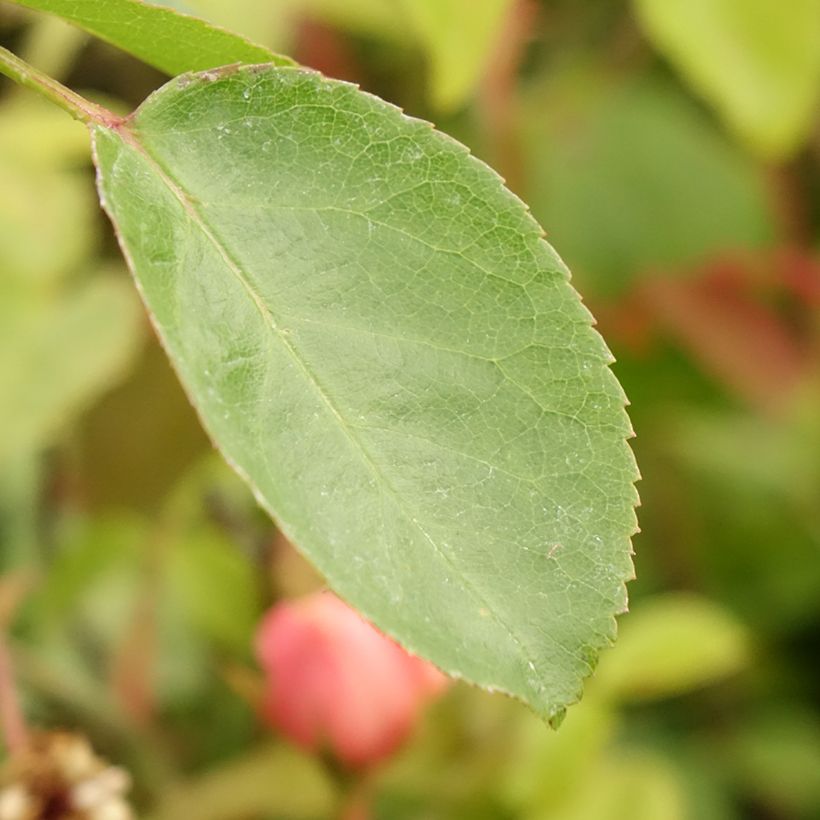

Plant habit
Flowering
Foliage
Botanical data
Rosa
Eleganza® Antique® Oh Happy Day® 'Koroligeo'
Rosaceae
Hybrid Tea Rose
Cultivar or hybrid
Other Large-flower tea Roses
Planting and care
Plant the 'Oh Happy Day' Rose from November to March, in ordinary, well-loosened, well-fertilized, and well-drained soil. Roses prefer clayey soils that are rather heavy than light. In soil that is too sandy, compact, or dry in summer, it is preferable to add compost, decomposed manure, or compost to the existing soil during planting. Soak the root ball in a bucket of water for fifteen minutes before planting, then place the rose in the planting hole, backfill around it, and water thoroughly. Then, provide regular watering during the first year and gradually reduce it to encourage the roots to grow deeper into the soil.
Plant this rose in a sunny location, ideally in partial shade in hot climates. Roses are nutrient-demanding plants, so a specific fertilizer application will be beneficial at the start of the growing season, and regularly throughout the flowering period. Preferably choose organic fertilizers that are richer in potassium (the K in the NPK formula) than in nitrogen (the N).
Roses are often stained or unsightly at the end of summer, but this is not a problem for their development. These stains are not harmful to the rose, it is a natural phenomenon.
Planting period
Intended location
Care
This item has not been reviewed yet - be the first to leave a review about it.
Roses by purpose
Haven't found what you were looking for?
Hardiness is the lowest winter temperature a plant can endure without suffering serious damage or even dying. However, hardiness is affected by location (a sheltered area, such as a patio), protection (winter cover) and soil type (hardiness is improved by well-drained soil).

Photo Sharing Terms & Conditions
In order to encourage gardeners to interact and share their experiences, Promesse de fleurs offers various media enabling content to be uploaded onto its Site - in particular via the ‘Photo sharing’ module.
The User agrees to refrain from:
- Posting any content that is illegal, prejudicial, insulting, racist, inciteful to hatred, revisionist, contrary to public decency, that infringes on privacy or on the privacy rights of third parties, in particular the publicity rights of persons and goods, intellectual property rights, or the right to privacy.
- Submitting content on behalf of a third party;
- Impersonate the identity of a third party and/or publish any personal information about a third party;
In general, the User undertakes to refrain from any unethical behaviour.
All Content (in particular text, comments, files, images, photos, videos, creative works, etc.), which may be subject to property or intellectual property rights, image or other private rights, shall remain the property of the User, subject to the limited rights granted by the terms of the licence granted by Promesse de fleurs as stated below. Users are at liberty to publish or not to publish such Content on the Site, notably via the ‘Photo Sharing’ facility, and accept that this Content shall be made public and freely accessible, notably on the Internet.
Users further acknowledge, undertake to have ,and guarantee that they hold all necessary rights and permissions to publish such material on the Site, in particular with regard to the legislation in force pertaining to any privacy, property, intellectual property, image, or contractual rights, or rights of any other nature. By publishing such Content on the Site, Users acknowledge accepting full liability as publishers of the Content within the meaning of the law, and grant Promesse de fleurs, free of charge, an inclusive, worldwide licence for the said Content for the entire duration of its publication, including all reproduction, representation, up/downloading, displaying, performing, transmission, and storage rights.
Users also grant permission for their name to be linked to the Content and accept that this link may not always be made available.
By engaging in posting material, Users consent to their Content becoming automatically accessible on the Internet, in particular on other sites and/or blogs and/or web pages of the Promesse de fleurs site, including in particular social pages and the Promesse de fleurs catalogue.
Users may secure the removal of entrusted content free of charge by issuing a simple request via our contact form.
The flowering period indicated on our website applies to countries and regions located in USDA zone 8 (France, the United Kingdom, Ireland, the Netherlands, etc.)
It will vary according to where you live:
- In zones 9 to 10 (Italy, Spain, Greece, etc.), flowering will occur about 2 to 4 weeks earlier.
- In zones 6 to 7 (Germany, Poland, Slovenia, and lower mountainous regions), flowering will be delayed by 2 to 3 weeks.
- In zone 5 (Central Europe, Scandinavia), blooming will be delayed by 3 to 5 weeks.
In temperate climates, pruning of spring-flowering shrubs (forsythia, spireas, etc.) should be done just after flowering.
Pruning of summer-flowering shrubs (Indian Lilac, Perovskia, etc.) can be done in winter or spring.
In cold regions as well as with frost-sensitive plants, avoid pruning too early when severe frosts may still occur.
The planting period indicated on our website applies to countries and regions located in USDA zone 8 (France, United Kingdom, Ireland, Netherlands).
It will vary according to where you live:
- In Mediterranean zones (Marseille, Madrid, Milan, etc.), autumn and winter are the best planting periods.
- In continental zones (Strasbourg, Munich, Vienna, etc.), delay planting by 2 to 3 weeks in spring and bring it forward by 2 to 4 weeks in autumn.
- In mountainous regions (the Alps, Pyrenees, Carpathians, etc.), it is best to plant in late spring (May-June) or late summer (August-September).
The harvesting period indicated on our website applies to countries and regions in USDA zone 8 (France, England, Ireland, the Netherlands).
In colder areas (Scandinavia, Poland, Austria...) fruit and vegetable harvests are likely to be delayed by 3-4 weeks.
In warmer areas (Italy, Spain, Greece, etc.), harvesting will probably take place earlier, depending on weather conditions.
The sowing periods indicated on our website apply to countries and regions within USDA Zone 8 (France, UK, Ireland, Netherlands).
In colder areas (Scandinavia, Poland, Austria...), delay any outdoor sowing by 3-4 weeks, or sow under glass.
In warmer climes (Italy, Spain, Greece, etc.), bring outdoor sowing forward by a few weeks.



































